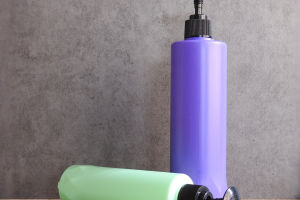When we stand by the shoreline and see a fishing boat moving steadily across the water, it’s easy to feel a sense of curiosity. What stories does that boat carry? What routines shape the day out at sea? Today, we invite you to join us as we step closer to this world.
Fishing boats may appear simple, yet each journey is filled with teamwork, steady focus, and a deep connection to the ocean.
As we explore how these vessels operate and how they support coastal communities, we also discover how closely our lives are tied to the rhythm of the sea. Let’s set sail together and uncover why fishing boats matter more than we notice.
What a Fishing Boat Really Is
A fishing boat is a vessel designed specifically for catching seafood. While the purpose sounds straightforward, the work involved is anything but simple. Each boat is built to match the waters it operates in. Some are small and flexible, perfect for coastal areas with calmer waves. Others are large and strong, built to travel far from land into deep waters. No matter the size, each boat serves as a link between the ocean and the people who rely on it for food, income, and tradition.
The Materials Behind the Work
Fishing boats can be built from several types of materials. Steel gives a boat strength, helping it resist strong winds and waves during long journeys. Wood offers a lighter structure and is easier to repair when needed. Fiberglass—smooth and durable—keeps boats lighter and helps them move efficiently across the surface of the water. Each material brings unique advantages, and choosing the right one ensures safety, durability, and stable performance throughout long hours on the water.
Why Registration Matters for Sustainability
To protect sea life and ensure responsible fishing, many regions require fishing boats to be officially registered. This step is more than a rule—it plays an important role in preserving the ocean. Registration helps authorities monitor fishing activities, prevent overfishing, and maintain healthy fish populations. It also ensures that the people who work on these boats follow guidelines that protect marine ecosystems. When we support registration, we also support long-term sustainability and healthier oceans for the future.
Boats That Travel Far From Shore
Some fishing boats are built for long journeys into distant waters, far beyond the coastline. These vessels are usually much larger, often weighing hundreds or even thousands of tons. They stay at sea for extended periods and must be equipped with reliable engines, sturdy hulls, and storage areas to keep catches fresh.
Life on these boats can be challenging. The crew works through changing weather, rolling waves, and long stretches of isolation from land. Yet their dedication brings seafood to markets around the world, connecting distant oceans to everyday dining tables.
Boats That Work Near the Coast
In contrast, near-shore fishing boats operate much closer to land. These vessels are smaller, more flexible, and usually return home daily. Their work focuses on coastal fish species, and they help provide fresh catches to local communities. Because they can move quickly and navigate narrow spaces, these boats often support small-scale industries that rely on daily harvests. Their presence keeps coastal economies active and strengthens bonds between families, tradition, and the sea.
Life and Rhythm on a Fishing Boat
Working on a fishing boat requires pattern, patience, and teamwork. The day often begins long before the sun rises. We prepare equipment, check weather conditions, and plan the route for the day. Once on the water, we rely on experience, observation, and coordination to find the right spots. Every step—from casting equipment to sorting the catch—requires focus and cooperation. Even though conditions can change suddenly, we move together, adjusting to the sea’s rhythm while keeping safety and quality in mind.
Closing Reflections
Lykkers, next time we see a fishing boat on the water, we’ll understand the effort, skill, and care behind it. These boats carry more than equipment—they carry stories, traditions, and the dedication of people who face the sea every day. Whether they travel far into deep waters or stay close to the coast, each boat supports communities and connects us to the ocean’s gifts. Thank you for joining us on this journey.
We hope this glimpse into fishing boats inspires curiosity and appreciation. Let’s continue exploring the world together—one experience, one discovery, one shared moment at a time.


